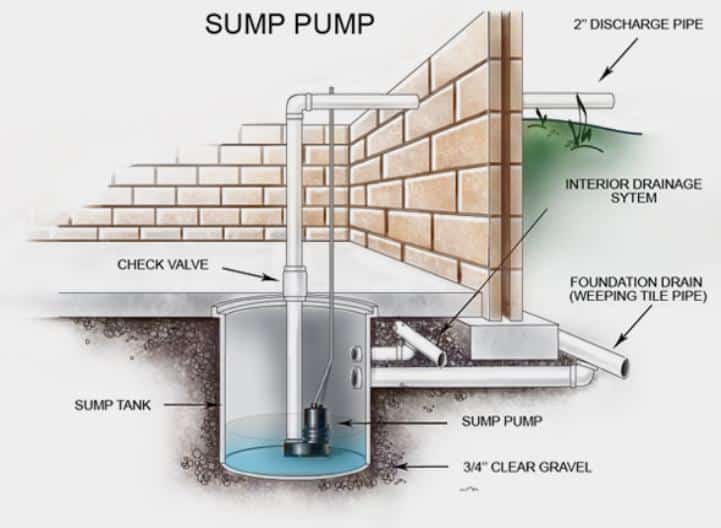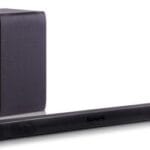Imagine waking up to find your basement flooded. Panic sets in as you realize your sump pump isn’t working.
It’s a nightmare scenario, and you need answers quickly. Water damage can be devastating, threatening your belongings and even the foundation of your home. But don’t worry; you’re not alone in facing this issue. Many homeowners have experienced the same frustration and found effective solutions.
We’re going to dive deep into why your sump pump might have failed and what you can do about it. You’ll learn practical steps to tackle the immediate problem and preventative measures to ensure it doesn’t happen again. Whether you’re dealing with a minor puddle or a major flood, understanding the root cause and acting swiftly can save you time, money, and stress. Keep reading to discover the expert tips that could be a game-changer for your home’s safety and your peace of mind.

Credit: www.basementsystems.com
Identifying The Problem
Flooding can turn your basement into a nightmare. A sump pump is essential to keep water out. If your basement floods, the sump pump might be failing. Identifying the issue quickly can save you time and money. Let’s look at signs and causes of sump pump failure.
Signs Of A Malfunctioning Sump Pump
Water pooling around the pump is a warning sign. Strange noises from the pump indicate trouble. Frequent cycling or running without stopping shows a problem. If the pump fails to turn on during heavy rain, it might be broken. Look for rust or corrosion on the pump body. Any unpleasant smell can suggest mold or mildew forming.
Common Causes Of Failure
Power outages often stop sump pumps. A blown fuse can halt its operation. Debris blocking the pump may cause it to stop. Improper installation leads to frequent issues. An old pump might simply wear out. Heavy rain can overwhelm its capacity, causing failure. A damaged float switch prevents the pump from activating. Check the discharge pipe for clogs or freezing.

Credit: www.cartersmyplumber.com
Immediate Actions To Take
Act fast if your sump pump fails and your basement floods. First, ensure safety by turning off electricity. Then, use a wet vacuum or mop to remove water quickly.
When your sump pump stops working, it’s easy to feel overwhelmed by the sight of water filling your basement. But there are immediate steps you can take to minimize the damage and regain control of the situation. Your quick response is crucial. Time is of the essence, and knowing what to do next can make a significant difference.
Stopping Water Ingress
First, identify the source of the water. Is it rainwater, groundwater, or a plumbing issue? If it’s a plumbing leak, turn off the main water valve to halt the flow. Consider the weather. If rain is expected, cover basement windows with plastic sheeting to prevent additional water ingress. Temporary sandbags can act as barriers to redirect water away from your home. Have you ever thought about keeping these on hand for emergencies like this?
Protecting Valuables
Once the water is contained, focus on your belongings. Start by moving valuables to higher ground. Items like electronics and important documents should be your priority. Elevate them using shelves or furniture. This simple action can save you hundreds of dollars in damages. Create a checklist. What items are non-negotiable in terms of protection? Knowing what to grab first can save you precious time when every second counts. Have you ever considered using waterproof containers for your basement storage? They can be a lifesaver during unexpected floods. By taking these immediate actions, you not only protect your home but also regain a sense of control over a chaotic situation. What steps have you taken in the past to prevent water damage? Share your insights in the comments below.
Troubleshooting The Sump Pump
A flooded basement is a homeowner’s nightmare. Sump pumps often help prevent this. But what if the pump fails? Knowing how to troubleshoot can save time and money. This section covers key areas to examine.
Power Supply Checks
The first step is checking the power supply. Ensure the pump is plugged in properly. Examine the circuit breaker. It might have tripped. If so, reset it. Also, check the outlet. Test it with another device to confirm it’s working.
Inspecting The Float Switch
The float switch activates the pump. A stuck switch is a common issue. Make sure it moves freely. Debris can block it. Remove any obstructions around the switch. Listen for a clicking sound. This indicates the switch is working.
Clearing The Discharge Line
A clogged discharge line can cause flooding. Check the line for blockages. Ice, debris, or dirt can clog it. Inspect the outdoor outlet. Ensure water flows freely. A clear line prevents backups and reduces flood risk.
Temporary Solutions
When your sump pump fails and your basement starts flooding, panic might be your first response. But worry not. There are practical temporary solutions that can help you manage the situation until permanent repairs are made. Whether you’re bailing out water manually or relying on backup pumps, each method has its own merits. Let’s dive into some of these approaches to keep your basement safe and dry.
Manual Water Removal
Imagine standing ankle-deep in water, feeling overwhelmed. Manual water removal can be your first line of defense. Grab a bucket and start bailing. It might seem tedious, but it’s effective for quick relief.
A wet/dry vacuum can also be a lifesaver. These vacuums are designed to suck up water and can speed up the process significantly. Do you have one tucked away in your garage? Now’s the time to use it.
Another handy tool is a mop or a squeegee. Push the water towards a drain or out the door. You’ll be amazed at how much difference a little elbow grease can make. Have you ever tried this method during a minor leak? It works wonders!
Using Backup Pumps
Consider installing a backup pump if you haven’t already. Battery-operated pumps can kick in when your primary pump fails, especially during a power outage. Have you thought about how much peace of mind a backup could offer?
Generator-powered pumps are another option. They require more setup but can handle larger volumes of water. This is ideal for serious flooding. Could this be the missing piece in your flood-prevention plan?
Did you know some homeowners use portable pumps? These can be quickly deployed in emergencies, offering a flexible solution. It’s worth exploring if you’re not ready to commit to a permanent backup system.
Temporary solutions can be a stopgap during a crisis, but they also highlight areas for improvement in your flood-prevention strategy. What steps will you take to ensure your basement is protected in the future?
Repair And Replacement Options
Experiencing a flooded basement due to a faulty sump pump can be stressful. Consider repairing the pump if it’s a minor issue. Replacement might be necessary for older or severely damaged pumps.
If your sump pump isn’t working and your basement is flooded, you’re likely feeling stressed and unsure of your next steps. Repairing or replacing your sump pump is crucial to prevent future flooding and water damage. Let’s dive into your options to get things back on track.
Professional Repair Services
Hiring a professional to repair your sump pump might feel like a big decision. But consider the expertise and tools they bring to the table. A professional can quickly diagnose the issue and offer solutions, saving you time and potential frustration. Imagine a situation where your sump pump fails during a heavy rainstorm. A professional can not only repair the immediate issue but also provide tips to prevent future problems. Wouldn’t you feel more at ease knowing your home is protected by a well-functioning system?
Choosing A New Sump Pump
If repair isn’t feasible, selecting a new sump pump is your next step. Take into account the size of your basement and the typical water flow. A more powerful pump might be necessary for larger areas with high water tables. Consider energy efficiency as well. Modern sump pumps often come with energy-saving features. Investing in a model with these benefits can reduce your electricity bill and your carbon footprint. Remember, it’s not just about choosing a pump that works now, but one that will serve you well in the long run. What features would give you peace of mind knowing your basement is safeguarded against future flooding? Repairing or replacing your sump pump is an opportunity to enhance your home’s resilience. By taking the right steps, you can protect your basement from future floods and enjoy peace of mind.
Preventive Measures
Basement flooding can be a nightmare when a sump pump fails. Regular maintenance prevents costly damages. Check for power issues, debris, and clogged discharge lines. Ensure your pump’s reliability with routine inspections.
When your basement floods due to a sump pump failure, the damage can be overwhelming. However, taking preventive measures can save you from this nightmare. By focusing on regular maintenance and having a backup plan, you can keep your home safe and dry. Let’s dive into some practical steps you can take.
Regular Maintenance Tips
Regular maintenance is crucial for keeping your sump pump in top condition. Imagine this: your sump pump fails during a heavy storm because you forgot to clean the pit. To prevent this, inspect your sump pump every few months. – Check the power source: Ensure that the pump is plugged in and receiving power. – Clean the sump pit: Remove any debris that might block the pump. – Test the pump: Pour water into the pit and see if the pump activates. Doing these simple checks can prevent costly damage.
Installing A Backup System
Installing a backup system is like having a safety net. Imagine your primary pump stops working during a power outage. A backup system can save you from a flooded basement. There are different types of backup systems available. – Battery-powered backups: These are great for short-term outages. – Water-powered backups: These use your home’s water pressure and don’t rely on electricity. Choosing the right backup system depends on your needs and budget. Consider what could happen if your pump fails and plan accordingly. Would you rather pay for a backup now or deal with the chaos of a flooded basement later? By taking these preventive measures, you’re not just protecting your home; you’re ensuring peace of mind. Are you ready to take action and secure your basement against future floods?

Credit: www.puroclean.com
Frequently Asked Questions
How Do I Fix A Failed Sump Pump?
Check power supply first. Ensure pump is plugged in. Inspect for blockages. Clean the pump. Test it again.
What Causes A Sump Pump To Stop Working?
Common causes: Power outages, switch issues, clogs, or motor failure. Regular maintenance helps prevent these problems.
Can I Prevent Basement Flooding Without A Sump Pump?
Yes. Improve drainage around the house. Install a backup battery. Seal basement walls and floors properly.
How Often Should I Test My Sump Pump?
Test your pump every three months. Regular checks ensure it works during heavy rain or flooding situations.
What Should I Do When My Basement Floods?
First, turn off electricity. Remove water using a wet/dry vacuum. Dry the area completely. Consider professional help.
Conclusion
A flooded basement can be overwhelming. Quick action is crucial. Inspect your sump pump regularly to avoid future issues. Clear debris to ensure proper function. Regular maintenance helps prevent costly damages. Consider professional help if problems persist. Protect your home from water damage.
Peace of mind comes with a working sump pump. Simple steps can make a big difference. Stay proactive and informed. Your home’s safety depends on it. Keep your basement dry and secure. Remember, prevention is better than repair. Stay alert to potential water hazards.
Your home deserves the best care.




